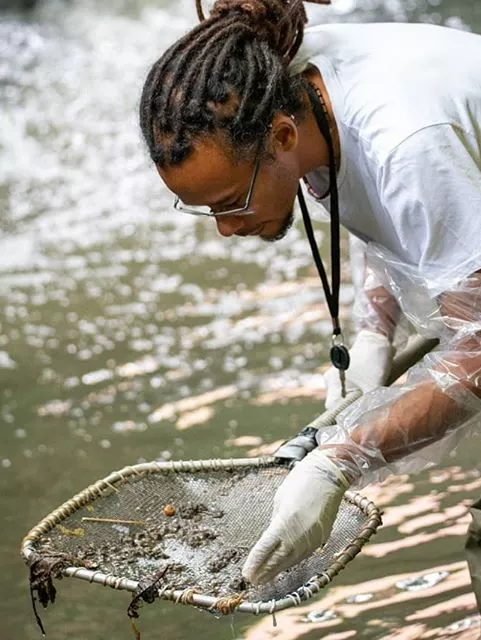
(He/Him)
🎙 Tell us about yourself?
I am an Evolutionary Ecologist who sees wonders beyond the concrete of our cities. I completed my PhD at the Biology Department at the University of Victoria, Canada. Then, I was a Post-doctoral Fellow at the Universidade do Estado do Rio de Janeiro, Brazil. Now I am back to Canada for my current position as a Post-doctoral Fellow at the Centre for Environmental Research in the Anthropocene (CERA) in Mandrak lab. Visit my website to learn more about my research: piatamarques.wixsite.com/website.
As a Black scientist, I am committed to help BIPOC students navigating academic racism. If you are a BIPOC student looking for support in academia, me and my colleagues can help you through the Odu initiative: oduinitiative.wixsite.com/my-site.
🎙 What are your research interests & what are you currently researching?
I am interested in understanding how aquatic organisms adapt to urbanization. In my research, I use a trait-based approach to understand the mechanisms determining the persistence and adaptation of freshwater biota to urbanization. Specifically, I look at how environmental changes (climate, built structures) and society (wealth, race) in cities change characteristics such as reproduction and body size of aquatic biota. My current research goal at CERA is to understand how socioeconomic dynamics shape the diversity of fish in urban streams in the Greater Toronto Area - GTA. I am also researching how socioeconomic factors shape the invasive potential of the Goldfish in urban ponds of the GTA.
🎙 What is the significance of your current research?
The findings of my research are of immediate use to support actions directed to improving the most degraded watersheds in the GTA and support urban planning that is more connected to the specific needs of the urban neighborhood. My research will expose the mechanisms facilitating invasive species in Toronto. This will provide conservation officials with much needed information to manage and prevent future invasions. Finally, my findings will be fundamental for better understanding environmental inequalities in the GTA area.
🎙 Any interesting insights/results so far related to your research?
Our partial results suggest that the response of urban aquatic biota vary among neighborhoods within the same city. By using the Goldfish as a research model we found that neighborhoods with increased urban density (density of built structures and people) leads to larger Goldfish that store more nutrient in their liver. This suggest that neighborhoods can give rise to Goldfish with different invasive potential.